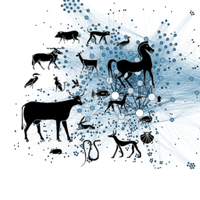Impact of pre-breeding feeding practices on rabbit mammary gland development at mid-pregnancy
This article has been Reviewed by the following groups
Listed in
- Evaluated articles (Peer Community in Animal Science)
Abstract
Optimizing rabbit does preparation during early life to improve reproductive potential is a major challenge for breeders. Does selected for reproduction have specific nutritional needs, which may not be supplied with the common practice of feed restriction during rearing in commercial rabbit production. Nutrition during early life was already known to influence metabolism, reproduction and mammary gland development later in life, in particular during pregnancy. The aim of this study was to analyze the impact of four different feeding strategies in the early life of rabbit females (combination of high or moderate feed restriction from 5 to 9 weeks of age with restricted or ad libitum feeding regime from 9 to 12 weeks of constituting the pubertal period) on their growth, reproductive capacities and mammary development at mid-pregnancy.
Unlike food intake, which remains regular, mean body weight gain was inversely proportional to the dietary restriction applied over the considered periods. The feeding strategies in place for the four groups had no effect on the reproductive parameters of the females at mid-pregnancy, as opposed to certain metabolic parameters such as cholesterolemia, that decreased with dietary intake at puberty (p≤0.05). Furthermore, restriction programs have impacted mammary tissular structures at mid-pregnancy. The expression of lipid metabolism enzymes (Fatty acid synthase N and Stearoyl co-A desaturase) is also increased in mammary epithelial tissue at mid-pregnancy by the dietary strategies implemented (p≤0.05). Moreover, milk gene expression, used as differentiation markers, indicates a better mammary epithelial development regarding further lactation, in the case of the less restrictive strategies during early life period, especially the higher feeding allowance. Our results highlight the importance of investigating feeding conditions of young female rabbits and nutrition in early life rearing, in order to provide specific recommendations for optimizing lactation and thus preventing neonatal mortality of the offspring.


